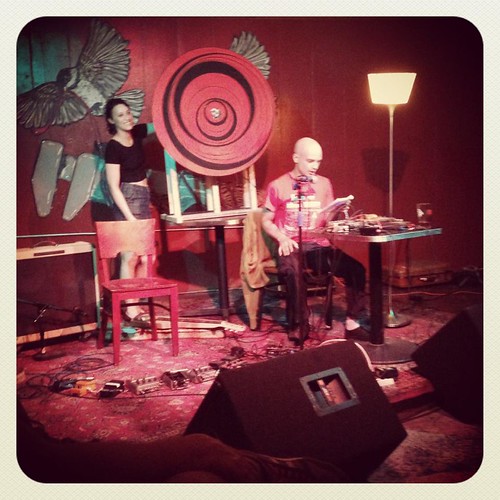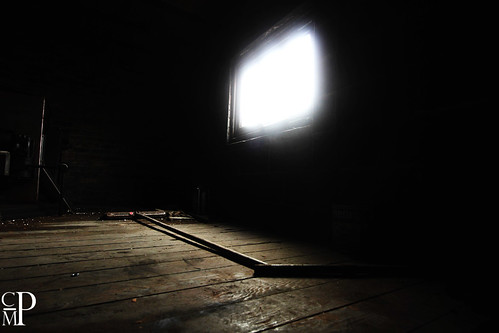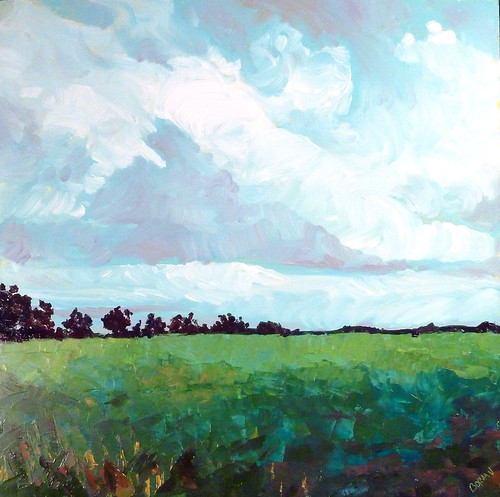Congratulations to the recipients in the 2012 Summer Cycle of the Greater Milwaukee Foundation’s Mary L. Nohl Fund Suitcase Export Fund. The fund provides support to greater Milwaukee artists who are exhibiting or screening work outside the immediate four-county area. This group of artists will be taking work to Hamburg, Germany; Suceava, Romania; Manhattan, New York; Peoria, Illinois; Grand Rapids, Michigan; Nashville, Tennessee; Baker, Nevada; Portland, Oregon; Sheboygan, Wisconsin; and Grand Rapids, Minnesota. The fund reopens in December.
Kevin Giese: Giese is participating in a two-person exhibition at the MacRostie Arts Center in Grand Rapids, Minnesota, as part of its 20th anniversary celebration.

William Zuback: For a solo exhibition at the Frank Juarez Gallery in Sheboygan, Wisconsin, where Zuback will be exhibiting part of his series of photographs taken in rear-view mirrors, Identity.
Jon Horvath: Horvath co-curated a group exhibition with Tara Bogart that features nine Milwaukee artists (Kevin Miyazaki, Sonja Thomsen, Jason Yi, Naomi Shersty, Nicholas Grider, Mark Brautigam, and Lindsay Lochman/Barbara Ciurej, as well as the co-curators) at the Newspace Center for Photography in Portland, Oregon.

Brad Lichtenstein: Lichtenstein will be screening his film As Goes Janesville twice at Lipscomb University’s Human Docs, a social justice documentary film series, in Nashville, Tennessee. He will also participate in 2-3 panel discussions including one for the Christian Scholars conference.

Kristin Gjerdset: To transport a triptych of acrylic paintings on wood planels to Great Basin National Park in Baker, Nevada, where it will be put on public display and become a part of the museum's permanent collection. Gjerdset was a Darwin Lambert artist-in-residence at the park in the fall of 2012, and the triptych was inspired by the flora and fauna she saw there.

Tim Stoelting: Stoelting will create a new installation from his series Architectonic to exhibit at the Urban Institute of Contemporary Arts’s Vault media gallery in Grand Rapids, Michigan in conjunction with Art Prize 2013.

Fred Stonehouse: Stonehouse will travel to Hamburg, Germany to participate in the group exhibition Don't Wake Daddy at Feinkunst Kruger. The annual exhibition includes artists from across Europe and the US.

Ashley Morgan: For a solo exhibition at the Peoria Art Guild/Foster Art Center in Peoria, Illinois. Morgan is creating 3 site-specific installations.

Adam Krause: For a “performance art version of a reading" from his new book, The Revolution Will Be Hilarious, at Bluestockings, a bookstore, fair trade cafe, and activist center in the Lower East Side of Manhattan. Krause reads through a series of tape delays, creating a “repetitive and minimalist sound work, with a strong visual element accompanying it” (in this case, a video projection of a large kinetic sculpture that he made and deployed at a Milwaukee performance).

Christopher McIntyre: McIntyre will travel to Suceava, Romania to participate in Border Cities & New Identities – International Art Festival of Architecture, Photography, Video Art, Computer Graphics, Painting and Performing Art at the The Water Plant Center of Architecture, Urban Culture and Landscape. The theme of the festival is “hybridization between identities and urban environment” and it is organized by International Art Expo, a not for profit located in Bari, Italy that “provides a significant forum for cultural dialogue between all artists from different cultures and countries."

Beki Borman: To ship her painting, Into Spring, to Morris, Minnesota for Horizontal Grandeur, a national prairie art juried group exhibition at the Stevens County Historical Society.
